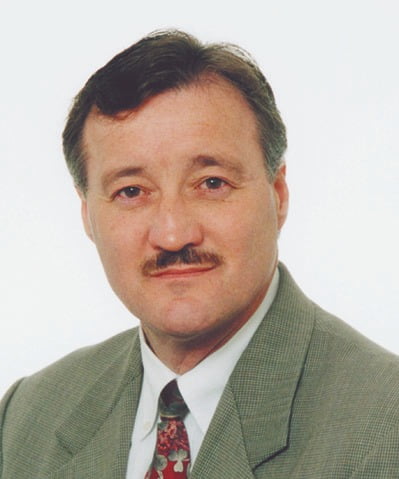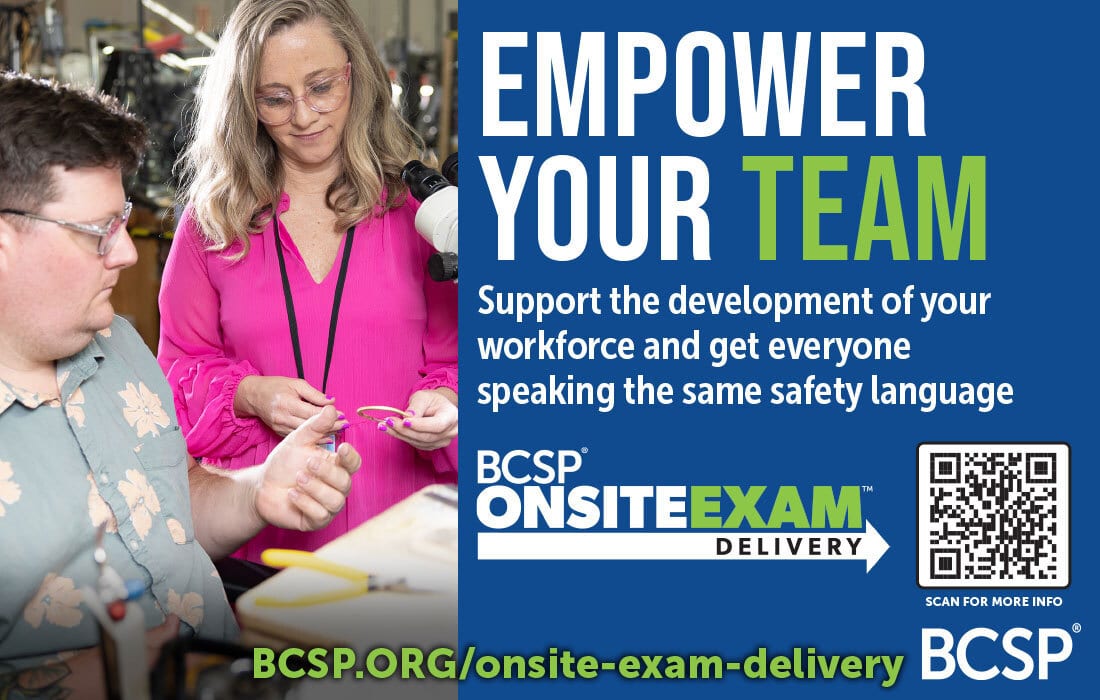By Dan Markiewicz
practices
MANAGING BEST
By Dan Markiewicz

The Global Risks Report 2025: What's the Real Danger?
A
re you ready to face the challenges of the world’s No. 1 risk? The skill you will need to conquer this challenge is rigorous skepticism.
The World Economic Forum's “Global Risks Report 2025” ranked by severity the 33 major global risks, e.g. risks that may “negatively impact a significant portion of global GNP, population or natural resources” over the next two years. Nearly one thousand risk and topic experts put their heads together to identify these risks. Below is a list of global risks in random order. Can you identify the #1 global risk today? Here is a hint: It’s not pollution. Experts rank pollution as the No. 1 global risk ten years from now.
• Extreme weather events
• Pollution
• Infectious disease
• Societal polarization
• Biological, chemical, or nuclear hazards
• Misinformation and disinformation
• Decline in health and well-being
• Biodiversity loss and ecosystem collapse
• Disruptions to a systemically important supply chain
• Economic downturn
• Inequality
• State-based armed conflict
Impact on OHS?
Historically, the OHS community has been ill-equipped to recognize, evaluate, and control this risk. After earning my CSP® and CIH® in the mid-1980s, I believed I was technically qualified to define and challenge this risk.
My findings on this risk were so profound that I was the first graduate student at the Medical College of Ohio to ever receive a stipend to present their research outside of the school. With support of the stipend and academic urgings, I presented my research in May 1987 at the “First International Conference on Education and Training in Occupational Health” at McMaster University in Canada. I honored NIOSH’s invite to present my research to their leadership team in October 1987. After writing about this risk a few times in ISHN, the board of the CSP’s and CIH’s believed it was necessary to hold a special joint meeting in Orlando FL in February 1989 to obtain specifics of my research. Some members of NASA were in attendance at the 1989 meeting. This afforded me the opportunity I give an illustrated example of how this risk directly impacted the agency. I updated NASA on this risk during a presentation at their annual Occupational Health Meeting held at the Kennedy Space Center in FL in 2022. Coincidentally, the World Economic Forum first put this risk on their radar in “Global Risks Report 2022” as a low ranked risk. Now it is global risk #1.
Photo: courtneyk / E+ / Getty Images
Trust me, I am an Expert!
Do you trust experts? You shouldn’t. I sought out experts to advance my knowledge of key occupational and public health issues with the belief that we could discuss OHS concerns on somewhat equal footing. I employ scientific methods to obtain knowledge. The scientific method “involves careful observation coupled with rigorous skepticism” (my emphasis but see Wikipedia for more information). Too many OHS experts, particularly those with CSP® with PhD STEM credentials were not passing my rigorous skepticism hurdle. Its not that some of these people were scientifically wrong in some key topics, some were dangerous to people’s health with what they practiced and preached.
Group failings
What sparked my research in the mid-1980s was not an individual’s failings but by the failing of the OHS community to recognize and call out when someone is preaching scientific nonsense. I once sat in a packed safety conference hall to listen to a mold “expert” explain microbiological hazards. While I cringed at many of his flubs, he ended the presentation to nearly unanimous applause from the OHS audience. I met this individual one-on-one after his presentation to get clarification on his views. Was he clueless about his flubs or did he have some other objective? He couldn’t recognize his mistakes. His CSP® was real but his PhD in Environmental Engineering came from a diploma mill. He was moving around with praise in the OHS world with a fake academic credential and no one, including him, seemed to care.
Misinformation and Disinformation
The Global Economic Forum defines Misinformation and Disinformation, today’s global #1 risk, as “Persistent false information (deliberate or otherwise) widely spread through media networks, shifting public opinion in a significant way towards distrust in facts and authority, includes but is not limited to: false, imposter, manipulated, and fabricated content.”
The World Economic Forum's “Global Risks Report 2025” was published in January 2025. Trump 2.0 broad and deep dismantling of traditional scientific research methods, funding, and information dissemination, that has guided the US for decades, was not factored into the global risk ranking. Science information in the US is being upended. You should expect great debate and a battle of “experts” over the coming years of what is considered healthy or unhealthy information within the US.
AI influence
With regard to health science, can you tell what’s real or just an AI illusion? In October 2024, I alerted ISHN’s Chief Editor that a “deep dive” podcast was created for one of my articles. The podcast is found at here. You should listen to the 10-minute podcast before reading further within this article.
Did you believe the podcasters were real? I initially believed the two podcasters, a man and women, were real but it was just a joke played on me by my tech savvy son who used Google’s NotebookLM to create the podcast in just a couple of minutes of goofing around time. How could I be so easily deceived?
The answer to the above is found in the research article “Artificial Intelligence-Generated Podcasts Deceive Even the Experts – Medscape – July 18, 2025.” Authors that published studies in the European Journal of Cardiovascular Nursing were asked to evaluate podcasts, which they believed were real about their published research. Half of the authors did not realize the podcast hosts were not human. Some authors even praised the podcasters for having clinical or nursing backgrounds.
Many of you reading this article use Microsoft Word with Copilot. If you have this tool, but have yet to use it, open a new document and when asked by Copilot “Describe what you’d would like Copilot to write” enter “write me a 1,200 word article on the age of experts in industrial safety and hygiene.” Allow a few seconds and the article will appear. Read the article and ask yourself truthfully if you could tell the article was written by AI. Information, science and otherwise, is freely flowing today and will be enhanced for good or evil use tomorrow.
Rigorous skepticism
To learn about rigorous skepticism, read the book “Trust Us, We’re Experts! How Industry Manipulates Science and Gambles with Your Future.” The book, published in 2001, helped me understand the craziness I encountered with this topic. A link to obtain the book is found at here.
A quick understanding of occupational health issues we’re facing today can be found at Chapter 4 “Dying for a Living.” Chapter 4 section on “Hygiene Hijinks” should prove particularly interesting. Are you unwittingly supporting the “third party” technique? Chapter 11 “Questioning Authority” gives great insights on why name calling and all that remains popular today to persuade people’s thinking.
Conclusion
Misinformation and disinformation today is rightfully the world’s number one risk. Understanding its OHS implications is exceedingly complex and often is influenced not by reason but by engrained bias and advancing tribal objectives.
Dan Markiewicz, MS, CIH, CSP, CHMM, is an independent environmental health and safety consultant. He can be reached at (419) 356-3768 or by email at dan.markiewicz@gmail.com.


